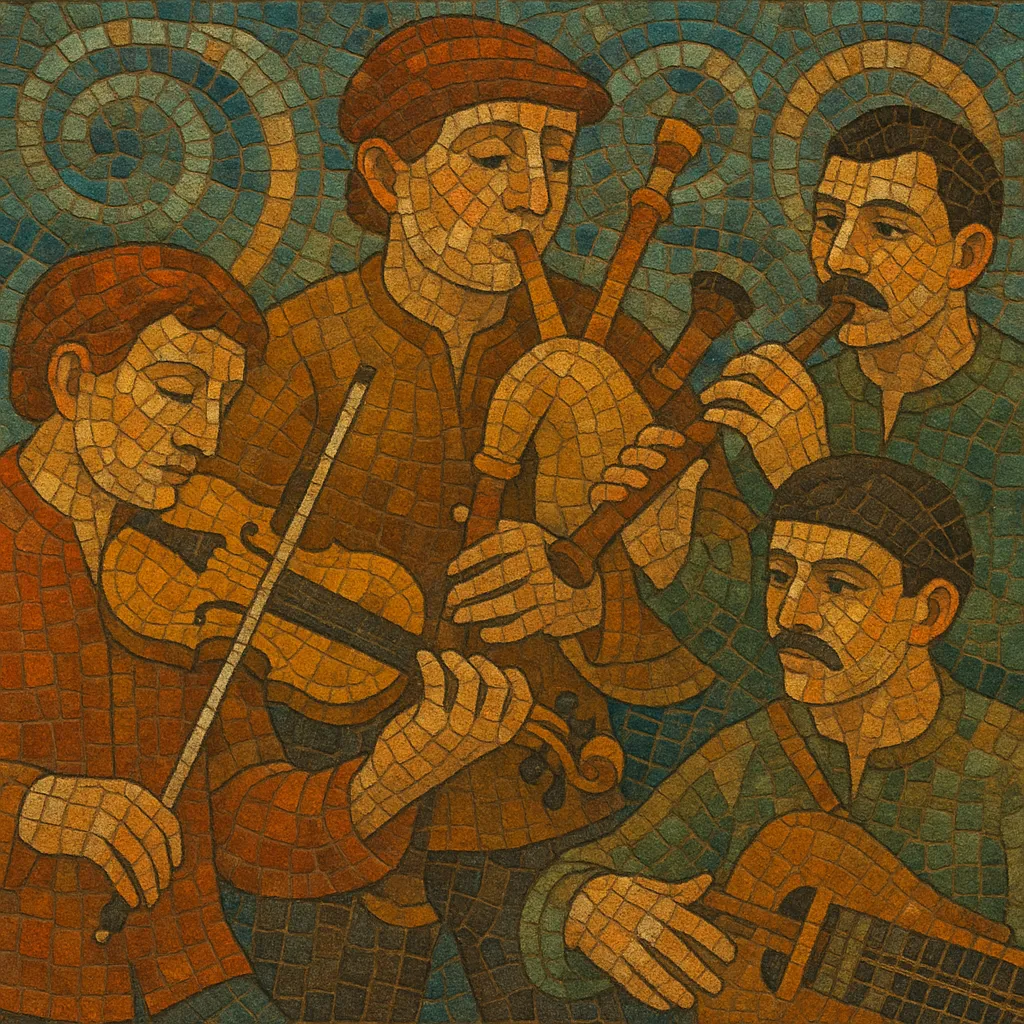Flemish folk music is the traditional and revival-based folk repertoire of the Dutch-speaking (Flemish) regions of Belgium. It blends centuries-old narrative songs and communal dance tunes with instruments such as fiddle, diatonic accordion, Flemish bagpipes (doedelzak), hurdy-gurdy, guitar, and flute.
Stylistically, it is strongly dance-oriented, featuring forms like the kadril (quadrille), polka, schottische, mazurka, and waltz, alongside ballads, work songs, and seasonal songs sung in regional dialects (West and East Flemish, Brabantian, Limburgish). Contemporary artists often arrange this material with modern harmony and ensemble interplay, maintaining a grounded, rustic character while supporting social dancing.
Flemish folk music draws on a long oral tradition of narrative ballads, devotional and seasonal songs, work songs, and dance pieces transmitted in villages and towns across Flanders. Medieval and early modern song culture, church processions, guild festivities, and rural gatherings provided the social settings in which repertoire and dance forms were maintained and adapted.
In the 1800s, pan-European couple dances—polka, mazurka, schottische, and waltz—entered local repertoires, joining older contredanse-derived forms such as the kadril (quadrille). Fiddles, small bagpipes, clarinet, and later diatonic accordions became common, and many melodies circulated as "boerenbals" (farmers’ ball) tunes tied to regional dialect lyrics.
After World War II, industrialization and mass media reduced traditional community dance contexts. From the 1960s, however, collectors, folk clubs, and festivals (notably Festival Dranouter, founded 1975) catalyzed a revival. Artists such as Wannes Van de Velde and Willem Vermandere reconnected urban audiences to dialect song traditions, while bands like Kadril and Rum arranged traditional tunes for modern ensembles, encouraging listening and dancing.
In the late 1990s and 2000s, the "boombal" movement introduced informal social dance nights focused on live traditional bands. Groups like Ambrozijn, Naragonia, Embrun, and Laïs highlighted modal melodies, strong dance grooves, and close vocal harmonies. This activity linked Flanders to broader European neo-trad circuits and reinforced a dance-first ethos.
Today, Flemish folk thrives through festivals, community dance events, and conservatory-trained musicians who balance archival repertoire with new compositions. While maintaining distinctive regional language and dance forms, the scene collaborates widely, absorbing elements from neighboring Dutch, French, and German traditions and participating in Europe-wide folk innovation.


